Huntsman Spider Facts
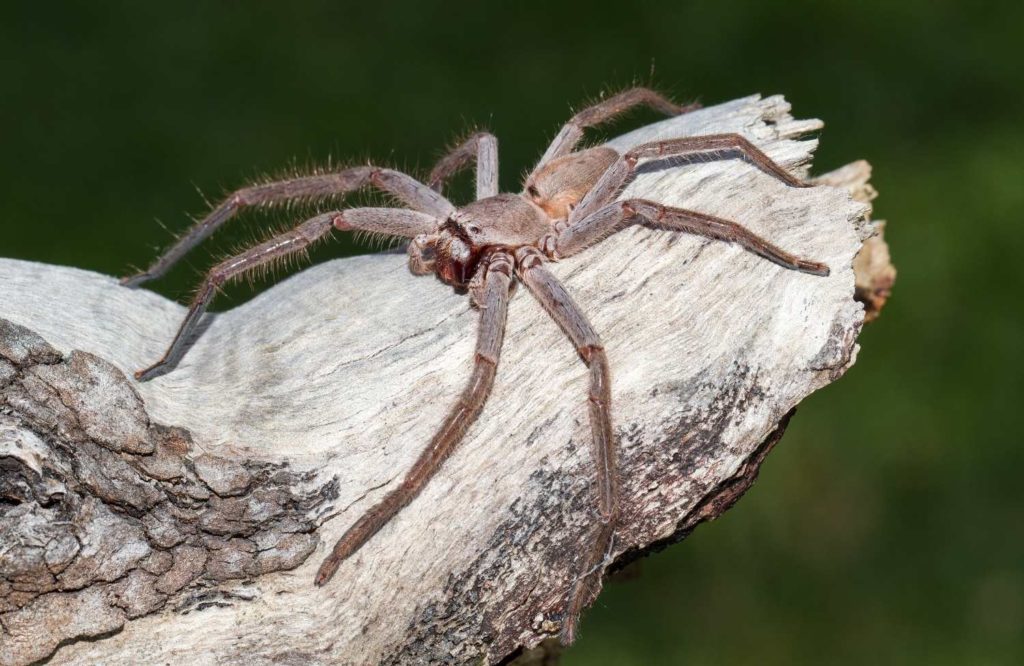
What would you find if you were to go to the darkest and dustiest area in your room? Your old stuff, dust, and cobwebs! Spiders who live in their woven nests called cobwebs find their homes in dark and quiet places. Most spiders are harmless, but some can be very dangerous as well.
The Huntsman Spiders are one of the many species of spiders. They own this name to their size, speed, and style of hunting. They belong to the class Arachnida and the family Sparassidae.
Huntsman Spider Appearance and Physical Traits
The Huntsman spiders are large creatures who are long-legged and have eight eyes. They have their eyes placed in two rows, with four in each row. Although they have so many eyes, their vision is not as good as other spiders. But it is enough to detect larger animals from a distance.
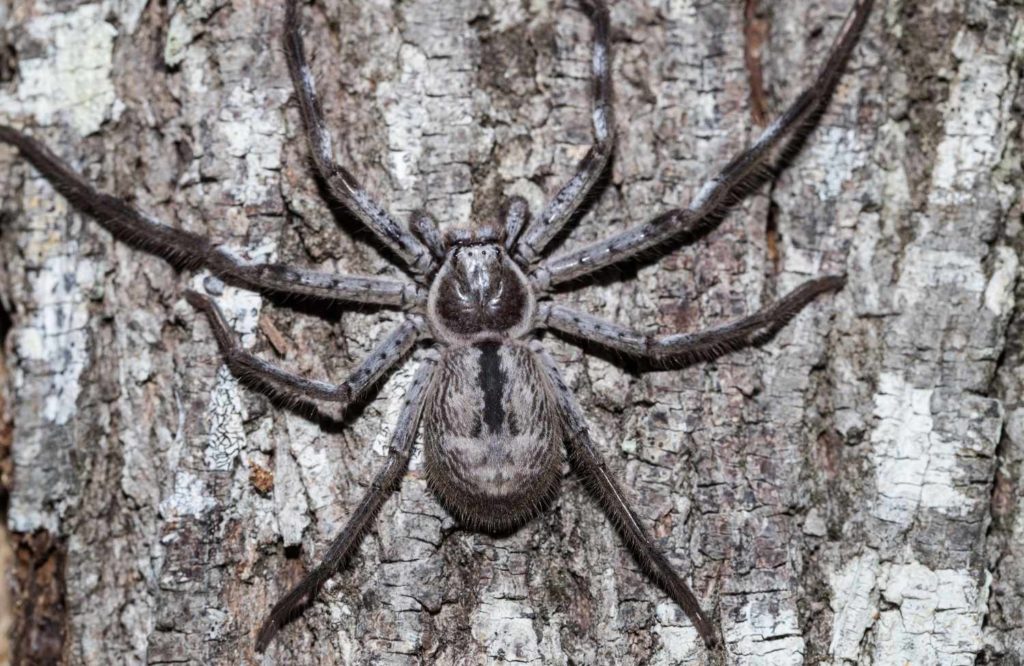
They have a base color of grey to brown, which helps them camouflage onto trees and rocks. They also have striped bands on the legs. One group, the Badge Huntsman, has a combination of white, black, yellow as a badge under their abdomen.
How many legs does a huntsman spider have?
Huntsman spiders have eight legs. Their legs have twisted joints which allows them to spread the legs forward. Their front legs are larger than the legs in the back. This helps them to move sideways like a crab. Hence, they are also known as giant crab spiders. Their legs have hairy feet that help them grip the surfaces better. The males have longer legs than the females.
Huntsman Spider Size
These spiders are giant, fast, and are famous for hunting down their prey. The average body of a huntsman spider is about 2cm long with a leg span of 15 cm. Some spiders, such as the Giant Huntsman Spider, have a leg span of 30 cm. The females have a larger abdominal area.
Their sizes sometimes confuse them for the species tarantulas. The position of the legs helps in identifying whether the spider is a huntsman or a tarantula. The legs of a huntsman spider spread forward like a crab.
What do Huntsman Spiders Eat?
The Huntsman Spiders have a unique way of catching their food. As the name suggests, they hunt their food instead of building a web and trapping it like the other species. They run after the prey and inject venom to kill it once captured. They have pincer-like claws in front of their mouth called Chelicerae. These hold the target still while injecting the poison.
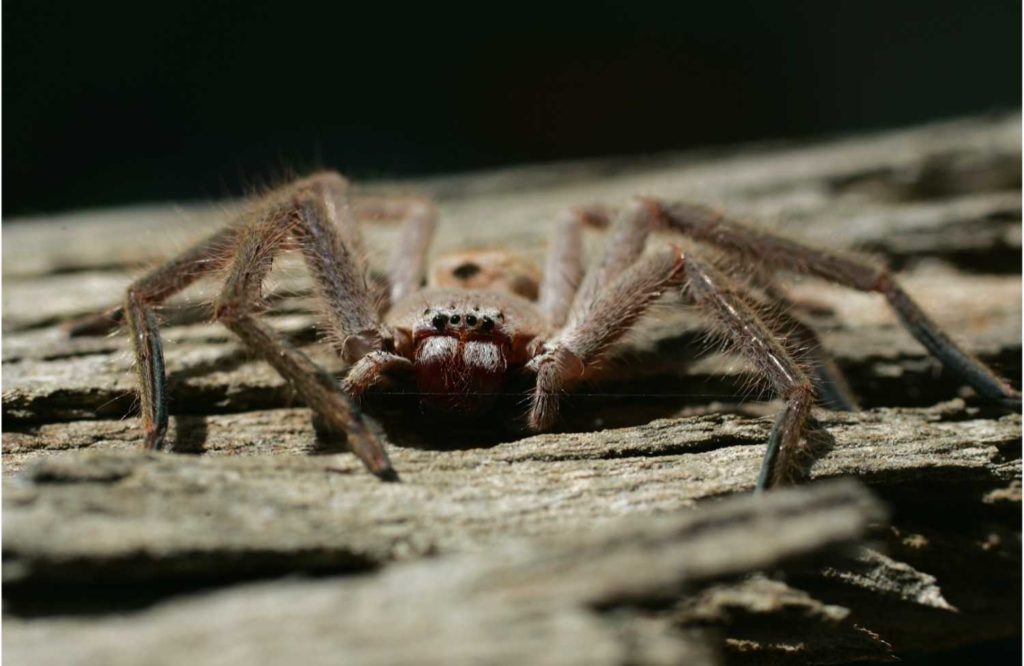
These spiders are carnivorous, and their food consists of insects and invertebrates. They eat during the night and feed on smaller spiders, pests, and lizards. One of their favorite foods includes cockroaches. So the next time you have a cockroach problem, consider getting a Huntsman spider!
Where do you find Huntsman Spiders?
The Huntsman spiders survive in weather that is tropical and warm. They inhabit most of Australia, New Zealand, the Mediterranean, and Southeast Asia. They are also found in Southern Africa and states such as Florida and Hawaii. Some species are found in subtropical areas as well.
Their favorite habitat is the woods. They often live in crevices of rocks, tree barks, logs, and under stubs & foliage. They have flat bodies that allow them to live in narrow places. They also find their way inside sheds and garages. Huntsman spiders are infamous for hiding in houses and cars.
Huntsman Spider Scientific Name and Classification
The Huntsman Spiders belong to the Phylum Arthropoda. They classify under the type Arachnid and are a part of the family Sparassidae. Presently, there are 96 genera and 1383 species of Huntsman spiders in total.
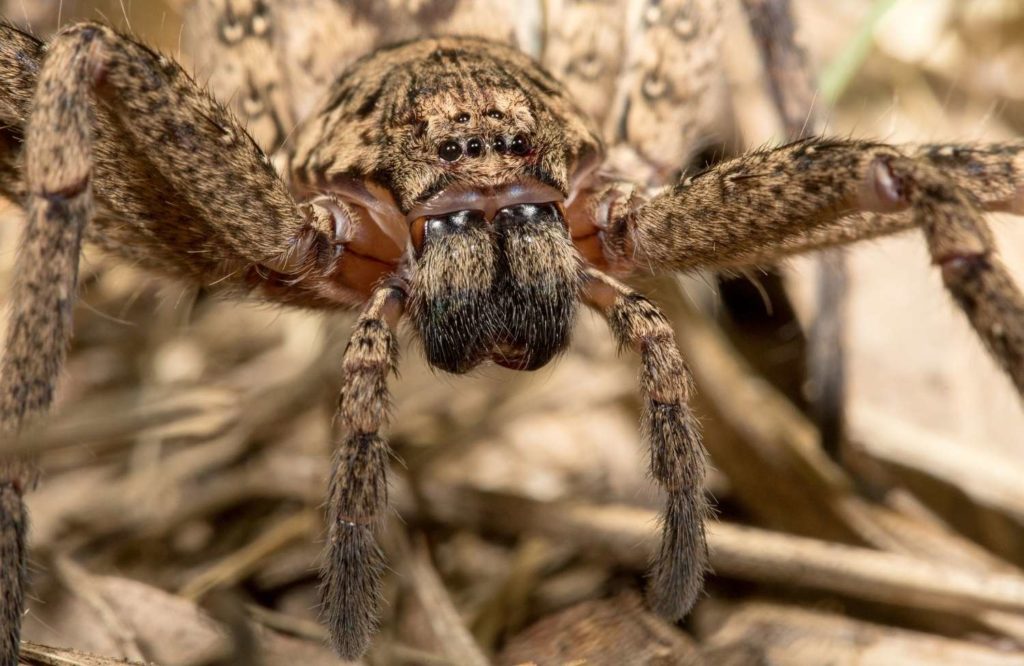
We call some species of Huntsman Giant Crab spiders. Keep in mind that they are different from actual crab spiders who belong to another family.
Types of Huntsman Spiders
There are over a hundred genera of huntsman spiders across the world. There is also a genus of huntsman spiders that can cartwheel! It is the only spider to do so and goes by the name Cebrennus rechenbergi.
Other famous genera include the following;
- Palystes (Rain spiders)
- Leucorchestris
- Micrommata
- Heteropoda venatoria
Giant Huntsman Spider
The Heteropoda maxima is the world’s biggest spider with a leg span of 30 cm. It lives in the caves of Laos, and is pale yellowish-brown in color.
Australian huntsman spider
Australia is home to a large number of Huntsman species. You will find many stories of people complaining about their cars becoming home to these. The spiders are gigantic, their size comparable to a tarantula.
Huntsman Spider Behaviour
Most groups of Huntsman spiders are nomadic who live and hunt alone. But, there are exceptions as well. Some Huntsman spiders are social creatures, unlike other Arachnids in general. They live in large family groups and also share their food. They are more active during the night and do not come out often during the day. They hunt for their prey during the dark.
Delena Canerides or the Social Huntsman are unique spiders. They do not live in webs and are very aggressive to animals not in the colony. They protect the young ones until they reach sexual maturity. Their behavior does not fit in with the standard behavior seen in spiders.
The Huntsman Spiders are calm in general and don’t attack unless provoked. The females are very possessive about their egg sacs. They defend their young ones against any threats. They will not hesitate to attack and bite the threat, be it human or animal.
Breeding and Reproduction in Huntsman Spiders?
The Huntsman Spiders have a long relationship before mating. The males and females have a peaceful relationship and mate for long hours. The majority of spider species follow spider cannibalism. It is the situation where the female attacks the male after mating. But the Huntsman spiders do not do so.
Mating Ritual Soundtrack
The male Huntsman spiders have a unique way of attracting females to mate. When they smell a pheromone left by the female Huntsman, they make a sound. They use their legs and abdomen to make a vibrating sound that attracts the attention of the female. The sound is like a ticking clock.
The Egg Sac
After breeding, the female produces an egg sac wrapped in white silk and places it under barks or rocks. The sac can contain up to 200 eggs. During this time, the females stand guard and defend against any attack. The hatching period depends on the climatic conditions. The female may also tear the sac to help the younglings to come out.
Baby Huntsman Spiders
Baby Huntsman spiders are born an ashen color. They molt many times to get the known shade of brown. The spiders stay with their mother for several weeks until they reach maturity. Huntsman spiders live up to 2 years.
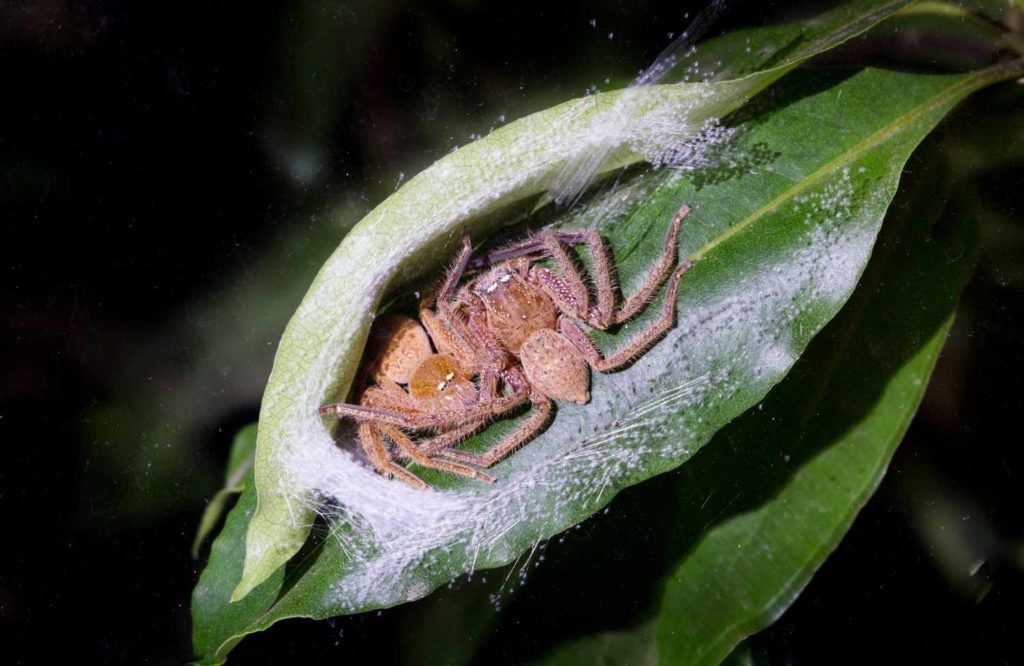
Are Huntsman Spiders Dangerous?
Even though Huntsman spiders look large and hairy, they do not pose any danger. Their fangs contain venom, and they attack if provoked. Otherwise, they are timid. Rather than trying to bite, they run away.
Huntsman Spider Bite
The bite does not need hospitalization, but it can be painful. A mild bite causes swelling and pain that goes away in an hour with a cold pack. Sometimes, a severe bite can cause nausea, headache, and vomiting.
Are Huntsman Spiders Poisonous?
A bite from a Huntsman spider causes pain, but it is nontoxic. The Huntsman spiders are venomous, not poisonous. Their venom does not have any harmful effect on humans.
Do they make good pets?
They are hands-off animals that do not reciprocate well to touch. But they are calm, make good house pets, and make sure you won’t have any cockroach problems!
How to get rid of Huntsman Spiders
Huntsman spiders do not live in one place, so they can be challenging to catch. They also run very fast. You can use a container to trap them and then release them into the wild. Check the doors as these spiders can fit into the narrowest places. Doing a little pest control will also ensure these spiders do not start living in the house.
Are Huntsman Spiders in Danger?
No, they are not in danger of being extinct.
